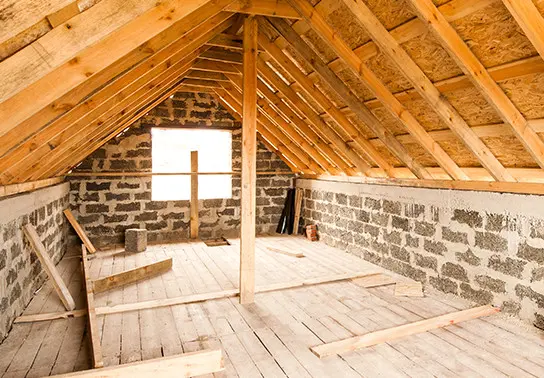
A
Air Infiltration: Air that leaks into or out of a house through damaged, deteriorated or improperly installed windows, doors and siding.
Astragal: Molding that overhangs the meeting edge of one side on a pair of double doors to prevent them from swinging past each other and failing to latch. Also called a meeting rail.
Argon: A gas that fills space between individual panes in a double-glazed window to provide insulation against heat loss and prevent fogging from condensation trapped between panes.
B
Backfill: Soil that fills in gaps left behind by excavation next to the exterior of a foundation.
Balustrade: A type of railing, typically found on balconies, stoops and porches, that is made up of small individual posts called balusters topped with a rail.
Batten: A strip of wood or composite material that is used as decorative finishing trim around the exterior of windows, doors and other architectural elements.
Brick Ties: Metal strips that are screwed into building exteriors and embedded in mortar joints to hold brickwork in place.
British Thermal Unit (BTU or Btu): A unit of measurement that represents how much heat is needed to raise the temperature of one pound of water by one degree Fahrenheit.
C
Canopy: A fabric-covered metal frame that projects out from a building to shade a window or entryway.
Casement: A common type of window sash that swings open on hinges from the side. Inward-swinging casements originate in France, while outward-swinging casements originate in England.
Caulk: Flexible sealing compound, often made from acrylic or silicone, that is used to fill and seal gaps in buildings to prevent moisture, dust, insects and other elements from getting through.
Colonnade: A row of evenly spaced columns joined together at the top by an entablature. Space defined by the colonnade may be covered or open, and straight or curved.
Common Brick: Basic clay bricks with rough sides and no exterior finish.
Composite: Any material fabricated from two or more separate components that are merged together. For example, plywood is a composite wood made from two or more materials.
Cresting: Decorative ridges at the crest or edge of roofs. They are usually made from iron and can be quite elaborate.
Cupola: A small dome sitting on a base that crowns a roof.
D
Damp proofing: Coating the outside wall of foundations with tar or foundation wrap to increase water resistance and prevent moisture incursion through the concrete.
Dormer: Structures that project outward vertically from sloping roofs and usually contain a window. Some dormers are functional and add additional living space or natural light, while others are purely decorative.
Double-Hung Window: A type of window with two individual sashes in one frame. Both the upper and lower sashes can be slid up or down.
Drip Cap: A small strip of metal or wood that sits above windows and doors to redirect water away from the exterior wall.
E
Easement: Areas on private property that can be legally accessed by individuals other than the owner. For example, utility company employees, or neighbors in cases where there are zero lot lines.
Egress Window: Basement windows that are large enough and open wide enough for someone to climb through during an emergency. Egress windows are legally required in finished basements before they can be used as livable space.
Energy Star: A program that is jointly operated by the U.S. Department of Energy and the U.S. Environmental Protection Agency to rate the energy efficiency of buildings and individual components or products such as windows and appliances.
Escutcheon: A flat piece of metal surrounding a door knob and keyhole that is protective and often ornamental as well.
F
Facing Brick: Bricks with a smooth or special finish, intended to be used on visible exterior parts of structures.
Fascia Board: Boards that cap off roofline edges, running parallel to the exterior walls. Fascia is typically where gutters are attached to rooflines.
Fenestration: The arrangement of windows and doors on each elevation of a building.
Flashing: Thin metal strips that are inserted at roof edges and other places such as window sills to direct water away from places where it could potentially enter the house.
Fogging: Condensation that accumulates in the space between glass panes in double-glazed windows when they lose their argon gas fill.
Foundation: The lowest part of a building's structure that supports the weight of the entire building and transfers it to the ground. It is usually made with concrete and may be partially or completely buried in the ground.
French Doors: Double doors in which both side swings open and shut independently of each other. They usually have large glass panes that extend from top to bottom.
Frieze: A decorative band in an entablature or below a cornice that often includes a relief.
G
Gable: The triangle at the top of an end wall, as defined by the slope of the roof on either side.
Glazing: Panes of glass (or sometimes plastic) in windows, doors and skylights.
Green-Treated Wood: Also called pressure-treated wood, it is lumber that has been infused with preservatives under pressure to prevent decay such as wood rot.
Gutters: Also sometimes called eavestroughs, they are the troughs that run along the edge of your roofline and collect all the rainwater that falls on your roof, directing it into downspouts and safely away from your home.
H
Hopper: A type of window in which the hinge is located at the bottom of the sash.
Hose Bib: Faucets that protrude from the exterior of a house, used to provide water to a garden hose or sprinkler.
I
Insulating Glass Unit (IGU): A double-paned window with two (or sometimes more) panes of glass separated by a spacer and sealed at the edges. It keeps houses warmer during winter and cooler during summer by resisting heat transfer.
J
Jamb: The vertical parts of a door frame where the hinges and latch mechanism are located.
L
Lintel: A horizontal structural beam above a window or door that supports the weight of the structure above to prevent the opening from collapsing.
Louver: A framed, slatted opening in an attic space that improves air flow and helps to vent out excess heat and humidity.
Lunette: A semi-circular or crescent-shaped window or aperture in an exterior wall.
M
Mansard Roof: A hipped roof with two slopes on each side, the lower slope being much steeper than the upper. The lower slope usually features dormer windows.
Masonry: The act of building structures out of individual units that are laid in place and usually bound together with mortar. Masonry may also refer to the units themselves, which are typically made of stone, brick, concrete, glass blocks or adobe.
Metal-Clad Windows: Exterior parts of a window that are covered with aluminum or another type of metal and then sealed to make them more resistant to harsh weather.
Mortar: A thick, cement-based compound, similar to grout, that is used to bond brick or other masonry together to form a solid surface or structure.
N
Newel Post: The central supporting pillar of a staircase, or the post at the bottom of a stair railing.
Nosing: The edge of a stair tread, usually rounded off, that protrudes past risers.
O
Obscure Glass: Treated glass, such as etched or frosted glass, that lets light through but is not transparent, so you can't see through it.
Oriel Window: A type of bay window that sticks out from buildings but doesn't rest on the ground. Instead, it's supported by brackets or corbels.
P
Paint-Grade: A grade of lumber that is intended to be painted as a finish, rather than stained.
Parapet: A low barrier at the edge of a roof, terrace or other elevated part of a building structure.
Parging: The act of applying a coat of cement over top of rough concrete or masonry to create a smooth, finished surface.
Portico: An open porch, usually on the front of buildings, that includes a roof supported by columns and which leads to an entrance.
Power Washing: The use of heated, high-pressure jets of water to clean outdoor surfaces and items such as siding, driveways, walkways and decks.
Pressure Washing: The use of high-pressure jets of water to blast away dirt, grime, algae, moss, stains, oil, loose paint and other stubborn substances that most cleaning methods can't remove. It differs from power washing in that the water is not heated.
Primer: An undercoat of paint applied before the finishing layers to improve durability and adhesion.
R
Relief: A carved or molded decorative element that is raised from a flat surface.
Retaining Wall: An outdoor masonry wall that supports or holds back soil. It can be made out of concrete or large rocks.
Roofline: Elements such as fascia, soffits and cladding at the edge of and below the part of roofs that extends past the edge of exterior walls.
S
Sash: The movable part of window frames that surrounds glass on all sides and either slides up and down in a double-hung window or swings open on hinges in a casement window.
Setback: The distance between a property line and building on the front, back and sides.
Sidelight: A narrow window that sometimes runs from floor to ceiling and is placed directly beside doors or larger windows.
Siding: Also called cladding, it is the outermost protective layer on a building. It can be made from a wide variety of synthetic or natural materials such as vinyl, brick, stone or wood.
Soffit Board: Boards that cover the underside of your roofline where it projects out past exterior walls. It is ventilated with holes or slats to allow excess heat and humidity to escape attics.
Spandrel: A panel of exterior wall between the top of windows on a lower story and the sill of windows on the story above.
Spindles: Vertical support pieces in handrails that are supported by bottom rails and topped with handrails. They differ from balusters in that they rest on rails rather than their own footing.
Stile: The vertical edge of paneled doors and windows
Stucco: An exterior wall coating made of cement, lime and sand that usually covers masonry structures such as bricks or concrete blocks.
T
Terracotta: Hard-fired clay that is typically used for exterior ornamental elements.
Truss: The structural support system that forms the shape of roofs.
Turret: A small tower on an upper floor of a house that is typically supported underneath by corbels.
W
Weatherstripping: The process of sealing doors and windows against moisture incursion and air drafts.
Weep Hole: Small gaps or openings in masonry that allow for drainage. It must be big enough for water to overcome surface tension and leak out.
Weeping Tile: Porous plastic pipes that are placed underground next to concrete footings to help drain water away. They are called weeping tiles because they originated when drain pipes were made with terracotta tiles.
Wood Rot: A form of decay caused by wood-eating fungi that thrive in damp timber with a moisture content of at least 20%. It eats away at wood, causing it to soften and crumble apart.
Wood Stain: Clear and tinted coatings applied to wood to enhance its appearance and make it more moisture-resistant.
Z
Zoning: Property labels, usually issued by municipal governments, that dictate acceptable uses for property. Zoning categories include residential, commercial, industrial and more.
 Click to call
Click to call



